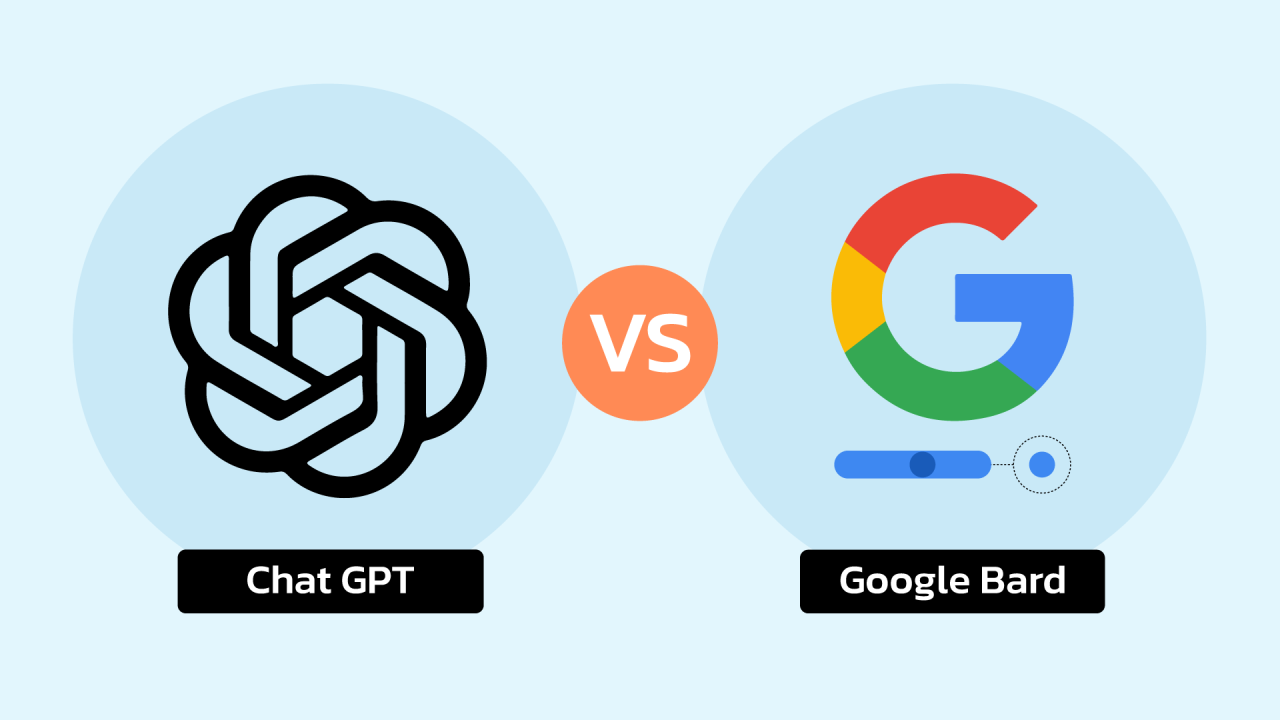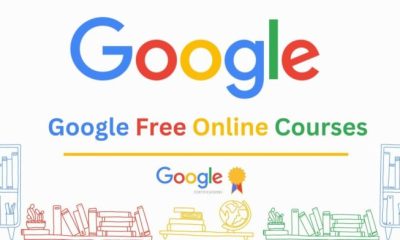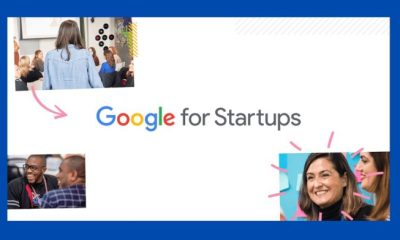News
Comparing & Contrasting Google Bard And ChatGPT

It is safe to safe SO many people are aware of ChatGPT, and more recently Google bard. They basically make our work easier; they provide fast, accessible and prompt results. This has led to the comparison of ChatGPT and Google bard.
What is ChatGPT:
- ChatGPT is an artificial intelligence (AI) chatbot that uses natural language processing to create humanlike conversational dialogue. The language model can respond to questions and compose various written content, including articles, social media posts, essays, code and emails.
What is Google Bard:
- Google Bard is an AI-powered chatbot tool designed by Google to simulate human conversations using natural language processing and machine learning.
Let us compare and contrast shall we?:
General overview
| ChatGPT | Bard | |
| Creators | OpenAI | |
| Language model | OpenAI’s GPT-3.5 (ChatGPT Plus: GPT-4) | Pathways Language Model (PaLM 2) |
| Data sources | ChatGPT was trained on a massive dataset of text, including Common Crawl, Wikipedia, books, articles, documents, and content scraped from the open internet; sources for the free GPT-3.5 model end in 2021, but ChatGPT Plus users can use GPT-4 to perform web searches | Bard was trained on Infiniset, a data set including Common Crawl, Wikipedia, documents, and conversations and dialogues from the web; Bard can also perform web searches |
| Pricing | Free; ChatGPT Plus is available for $20/month | Free |
What are the benefits of ChatGPT?
- Efficiency: AI-powered chatbots can handle routine and repetitive tasks, which can free up employees to focus on more complex and strategic responsibilities.
- Cost savings: Using AI chatbots can be more cost-effective than hiring and training additional employees.
- Improved content quality: Writers can use ChatGPT to improve grammatical or contextual errors or to help brainstorm ideas for content. Employees can take ordinary text and ask to improve its language or add expressions.
- Education and training: ChatGPT can help provide explanations on more complex topics to help serve as a virtual tutor. Users can also ask for guides and any needed clarification on responses.
- Better response time: ChatGPT provides instant responses, which reduces wait times for users seeking assistance.
- Increased availability: AI models are available around the clock to provide continuous support and assistance.
- Multilingual support: ChatGPT can communicate in multiple languages or provide translations for businesses with global audiences.
- Personalization: AI chatbots can tailor responses to the user’s preferences and behaviors based on previous interactions.
- Scalability: ChatGPT can handle many users simultaneously, which is beneficial for applications with high user engagement.
- Natural language understanding: ChatGPT understands and generates humanlike text, so it is useful for tasks such as generating content, answering questions, engaging in conversations and providing explanations.
- Digital accessibility: ChatGPT and other AI chatbots can assist individuals with disabilities by providing text-based interactions, which can be easier to navigate than other interfaces.
What are the limitations of ChatGPT? How accurate is it?
- It does not comprehend the complexities of human language. ChatGPT has been taught to produce words based on input. As a result, comments may appear shallow and lacking in actual insight.
- Lack of understanding about data and occurrences after 2021. The training data concludes with 2021 content. ChatGPT may deliver incorrect information based on the data it obtains. If ChatGPT does not properly understand the query, it may produce an incorrect result. ChatGPT is still being taught, providing feedback when a response is incorrect is advised.
- Responses can sound like a machine and unnatural. Since ChatGPT predicts the next word, it can overuse words such as the or and. Because of this, people still need to review and edit content to make it flow more naturally, like human writing.
- It summarizes but does not cite sources. ChatGPT does not provide analysis or insight into any data or statistics. ChatGPT might provide statistics but no real commentary on what these statistics mean or how they relate to the topic.
- It cannot understand sarcasm and irony. ChatGPT is based on a data set of text.
- It might focus on the wrong part of a question and not be able to shift. For example, if you ask ChatGPT, “Does a horse make a good pet based on its size?” and then ask it, “What about a cat?” ChatGPT might focus solely on the size of the animal versus giving information about having the animal as a pet. ChatGPT is not divergent and cannot shift its answer to cover multiple questions in a single response.
How can you access ChatGPT?
To access ChatGPT, create an OpenAI account. Go to chat.openai.com and then select “Sign Up” and enter an email address, or use a Google or Microsoft account to log in.
After signing up, type a prompt or question in the message box on the ChatGPT homepage. Users can then do the following:
- Enter a different prompt for a new query or ask for clarification.
- Regenerate the response.
- Share the response.
- Like or dislike the response with the thumbs-up or thumbs-down option.
- Copy the response.
What are the benefits of Google Bard?
- Internet Access: Bard can only access the internet to find the latest information for your research. If you want a chatbot that can get online and give you the latest info, Bard is the best choice.
- Draft to Gmail/Google Docs: Google Bard and ChatGPT can be used to write emails, articles, summaries, and blog posts. However, you can also use Bard to email the result directly to Gmail or save it in Google Docs. This allows you to easily edit the draft before sending or saving it. Simply scroll to the bottom of the results page, click the up arrow symbol next to the Google button, and then select export to Google Docs or draft in Gmail.
- It is Free: The latest language model behind Bard can access the internet, integrate with other Google services, provide location-based answers, etc., and is completely free on Bard.
- It is straightforward: Bard would rather provide simple solutions rather than a list of search engine results. It provides information in the same way that Alexa and Siri do, but it also contains links for consumers to explore deeper.
- It can be a personal assistant: Bard also works as a personal assistant, aiding with activities such as trip planning, locating reservations, and meal preparation. Bard answers to natural, conversational questions rather than typical search engine terms.
- Multiple Drafts: Bard creates up to three drafts for emails, articles, or recommendations, allowing you to select the best one without having to regenerate. Because you can compare and choose from several possibilities, this is very useful for things like recipe recommendations or daily routine planning. Having three drafts provides you more options to start with, whether it’s for a timetable, training regimen, or diet.
- Export and Collaboration: Users can easily export their content into documents or send it via Gmail. Additionally, users have the option to expand their prompts by using a search feature, which is referred to as “Google it.”
- Website/Article Summary: You can Bard for summaries and questions about any webpage. You can also request a speed read to learn rapidly and simplify complicated topics. You can, for example, ask Bard to summarize a certain article by providing the link. You can also request that Bard present the essential ideas in a bulleted format for better comprehension.
- Draft to Gmail/Google Docs: Google Bard and ChatGPT can be used to write emails, articles, summaries, and blog posts. However, you can also use Bard to email the result directly to Gmail or save it in Google Docs. This allows you to easily edit the draft before sending or saving it. Simply scroll to the bottom of the results page, click the up arrow symbol next to the Google button, and then select export to Google Docs or draft in Gmail.
- Images in Results: Bard, like ChatGPT, is a sophisticated language model. However, Bard can integrate photos from the web in its responses, offering visual context for topics like recipes, trip destinations, and shopping items. This tool enhances the user experience by using Google Image Search.
- It is user friendly: Google Bard also features the advantage of possessing a user-friendly interface making it easy to use and understand. Google users can naturally use this and can be incorporated with Google products and services.
What are the limitations of Google bard?
- Bias, Inaccurate and Ambiguity: Google Bard’s partiality, inaccuracy, and ambiguity are major drawbacks. Big data may distort Google Bard’s model. Its information may be misleading or wrong. Thus, Google Bard users must fact-check whatever material they find, which takes time. Additionally, Google Bard struggles with unclear responses. It sometimes misinterprets requests and returns irrelevant results. For the best answers, users must provide as much context as possible while prompting.
- Limited Generative Potential: Google Bard may be creative, but its generative capacity is limited, unlike GPT-4-based AI tools that can make long-form content. Google Bard cannot write long articles, essays, or stories. Google Bard is currently developing, therefore it may have operating limits and be inefficient at handling all tasks.
- Does not provide a Source: Bard is useful for research since it gives real facts, but overuse can be harmful. One drawback is that it doesn’t cite or connect to its sources. Google Bard cannot be used alone for research, which is one of its main drawbacks.
- Inconsistencies in Responses: Google Bard’s response unpredictability is another drawback. It may say it can analyze a document. But given the input, it won’t examine the document. Google Bard cannot read or interpret documents and is inconsistent.
- Limited in Creativity: Another notable disadvantage of Google Bard is its limitation in creativity. Bard is prone to producing repetitive and unoriginal responses due to this lack of creativity. This also implies that it may have the tendency to produce poems or musical lyrics etc, similar to other already produced works.
How can you access Google Bard?
Go to bard.google.com. At the top right, select Sign in. Sign in to your personal Google Account.
For more information on ChatGPT and Google Bard, you can visit here and here
Summary
Google Bard
|
Pros |
Cons |
|---|---|
|
Bard offers a better user experience overall, complete with the ability to easily modify prompts, export responses to Google Docs and Gmail, and share conversations |
Bard can read its responses out loud, but its robotic voice leaves much to be desired |
|
Bard can perform web searches faster than ChatGPT and offers it for free to all users |
While Bard provides sources and external links to resources (if prompted), the sources aren’t always reliable |
|
Bard can retrieve images from the web |
Bard provides a fairly isolated experience, with no plugins or integrations other than with Google apps |
ChatGPT
|
Pros |
Cons |
|---|---|
|
ChatGPT is better at generating text, such as long-form articles and emails, and can generate AI images |
Web access is available only to ChatGPT Plus and Enterprise users |
|
ChatGPT offers a collaborative experience, with the ability to share conversations with others |
Web searches can be glitchy and run much slower than Bard |
|
ChatGPT has a whole suite of plugins (and a Zapier integration) that offer more use cases with different apps |
ChatGPT doesn’t let you share conversations with images |
Conclusion
It’s worth noting that ChatGPT and Bard have one major flaw in common: both chatbots are prone to producing plausible-sounding but incorrect responses (also known as hallucinations). Bard is made for research. ChatGPT is better for generating content, especially when data is given, such as summarizing an article.
At the end of the day, the better AI tool depends on your needs—and your ability to deal with those annoying hallucinations.




















